If you appreciate the cozy warmth and charming look of a wood stove, allow me to assist you in ensuring its proper use and maintenance.
In this article, I’ll share my knowledge and experience to ensure your safety and satisfaction. From gathering and preparing firewood to troubleshooting common issues, I’ll cover it all.
So, grab a cup of hot cocoa and get ready to master the art of using a wood stove in no time.
Key Takeaways
- Safety precautions are important when using a wood stove, including having a fire extinguisher and carbon monoxide detector nearby.
- Gathering and preparing firewood properly, focusing on hardwood species and ensuring it is properly dried, is crucial for efficient combustion and reducing the risk of creosote buildup.
- Storing firewood correctly, with proper airflow and in a dry and well-ventilated area, is essential for keeping it dry and ready to use.
- Using dry and seasoned firewood, stacked properly for good airflow, is important for a clean and efficient burn in a wood stove.
Safety Precautions
I should always remember to follow safety precautions when operating a wood stove. One of the most important safety measures is to have a fire extinguisher readily available near the stove. In case of an emergency, such as a sudden flare-up or a fire spreading, having a fire extinguisher can help to quickly suppress the flames and prevent further damage. It’s crucial to ensure that the fire extinguisher is fully charged and easily accessible at all times.
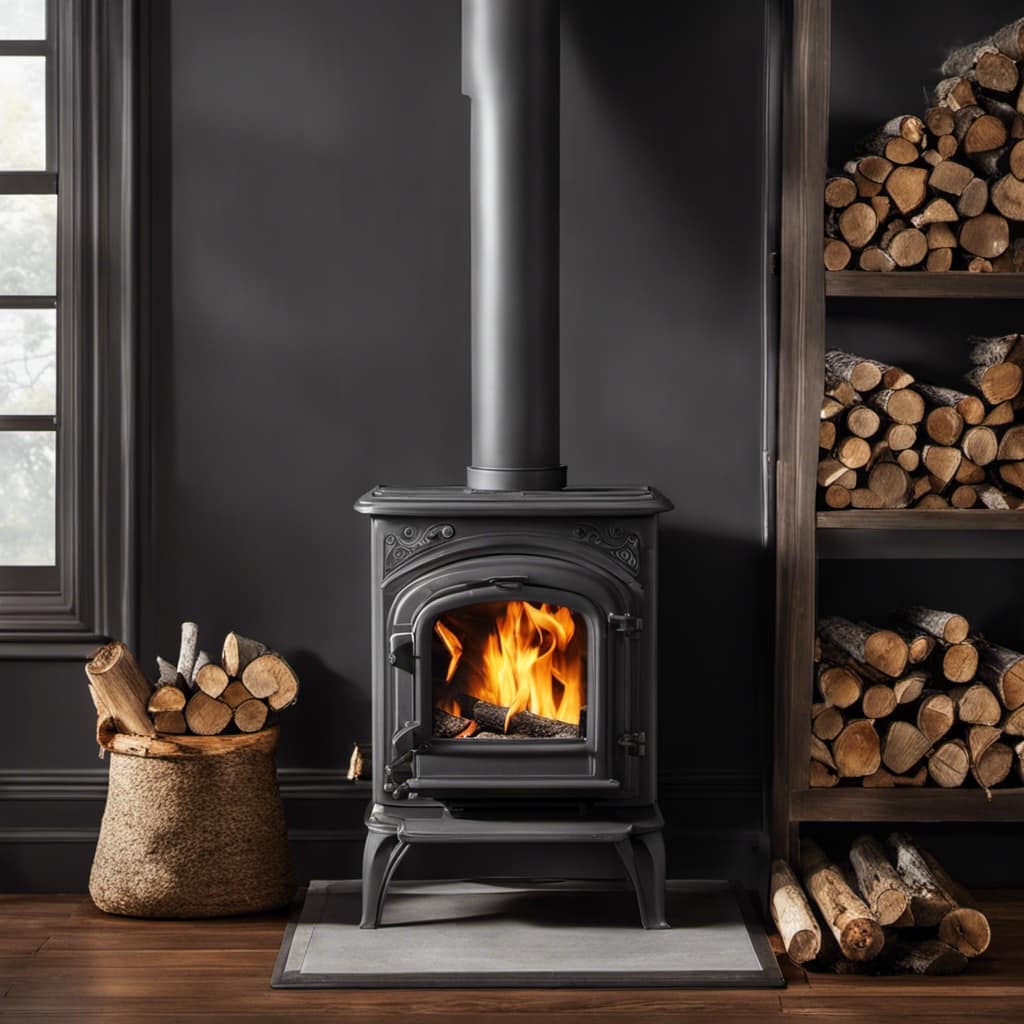
Another essential safety precaution is to install a carbon monoxide detector in the room where the wood stove is located. Carbon monoxide is a colorless and odorless gas that can be produced by incomplete combustion in the wood stove. Exposure to high levels of carbon monoxide can be extremely dangerous and even fatal. A carbon monoxide detector will alert you if there’s a buildup of this harmful gas, allowing you to take immediate action and ensure your safety.
Gathering and Preparing Firewood
Gathering and preparing firewood is an essential task for ensuring a warm and efficient fire.
To begin, I recommend scouting for fallen or dead trees in the surrounding area, focusing on hardwood species such as oak or maple.
Once identified, I use a chainsaw to cut the logs into manageable lengths, typically around 16 inches, and then split them into smaller pieces using a maul or splitting axe.
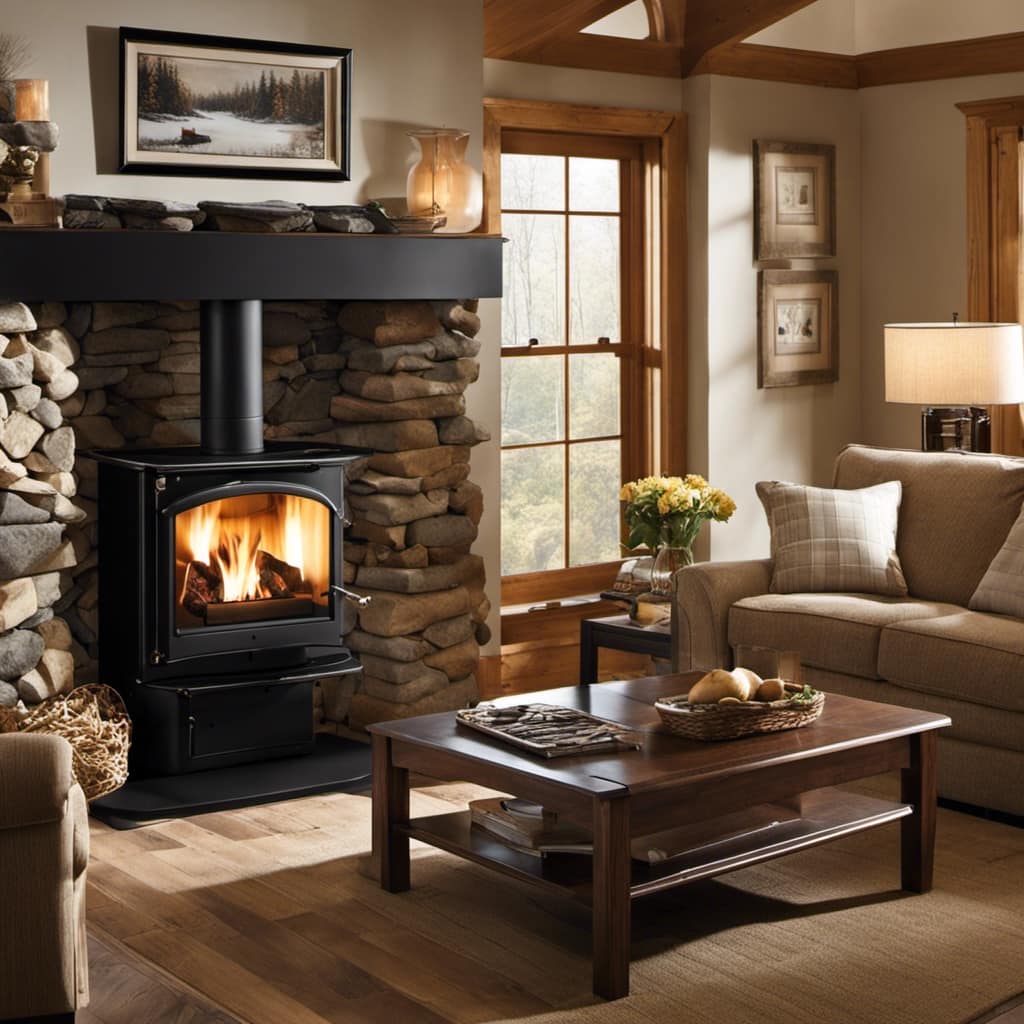
Firewood Storage Tips
Storing firewood properly is essential for keeping it dry and ready to use in my wood stove. When it comes to firewood storage, there are a few key tips to keep in mind. First, it’s important to stack the firewood in a way that allows for proper airflow. This helps to prevent moisture build-up and promotes faster seasoning. When stacking, make sure to leave space between the logs to allow air to circulate. Additionally, it’s crucial to elevate the firewood off the ground to prevent it from absorbing moisture from the soil. Using a firewood rack or pallets can help achieve this. Lastly, it’s important to store the firewood in a dry and well-ventilated area, such as a shed or covered woodpile. By following these tips, you can ensure that your firewood is properly seasoned and ready to provide cozy warmth in your wood stove.
| Firewood Stacking Tips | Firewood Seasoning Tips |
|---|---|
| Stack with proper airflow | Keep firewood off the ground |
| Leave space between logs | Store in a dry area |
| Use a firewood rack or pallets | Allow for proper ventilation |
| Store in a shed or covered woodpile | Promote faster seasoning |
Proper Firewood Moisture
Properly dried firewood is crucial for efficient combustion and reducing the risk of creosote buildup in my chimney. To ensure my firewood is adequately dried, I employ various firewood drying techniques.
First, I split the logs into smaller pieces, allowing for increased surface area and faster drying.
Next, I stack the wood in a well-ventilated area, preferably off the ground, to promote airflow and prevent moisture retention. It’s essential to cover the top of the stack while leaving the sides open to protect the wood from rain and snow.
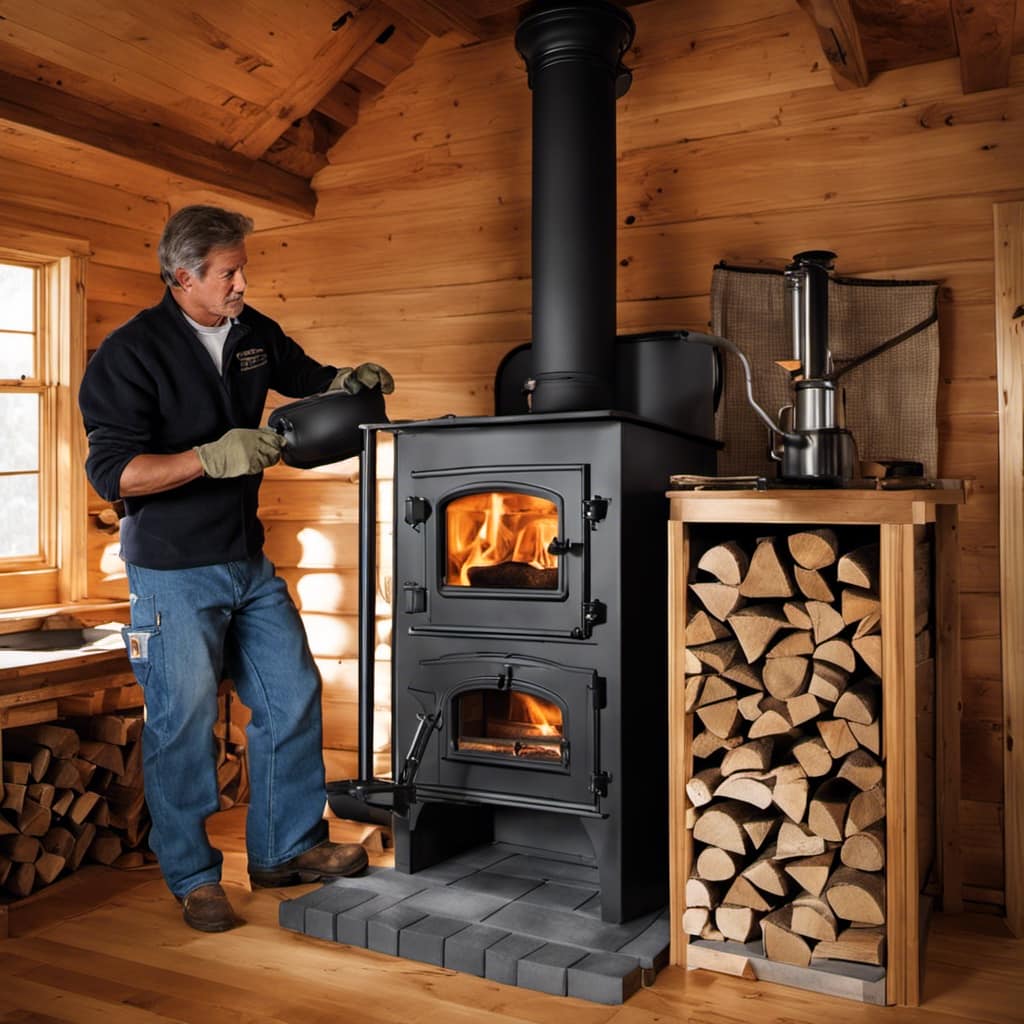
To measure firewood moisture, I use a moisture meter, which accurately determines the moisture content and ensures that it’s below 20%.
Lighting the Fire
I’ll grab some newspaper to help me light the fire in the wood stove. It’s important to use dry and seasoned firewood for a clean and efficient burn. When selecting firewood, I look for pieces that have been properly seasoned, meaning they’ve been dried for at least six months to a year. Seasoned firewood has a moisture content of around 20%, which allows it to burn more efficiently and produce less smoke.
Once I’ve my firewood, I stack it properly to ensure good airflow and easy access. Here are some tips for firewood stacking:
- Stack the firewood in a neat and organized manner, creating stable and sturdy rows.
- Leave some space between the pieces to allow for air circulation, which helps the firewood dry out even more.
- Stack the larger pieces at the bottom and the smaller ones on top, creating a stable base and making it easier to access the wood.
Adjusting Airflow and Controlling Heat
To control the heat and adjust the airflow in my wood stove, I simply open or close the damper as needed. The damper is a small metal plate that is located above the firebox. By adjusting its position, I can regulate the amount of air that enters the stove and therefore control the intensity of the fire.
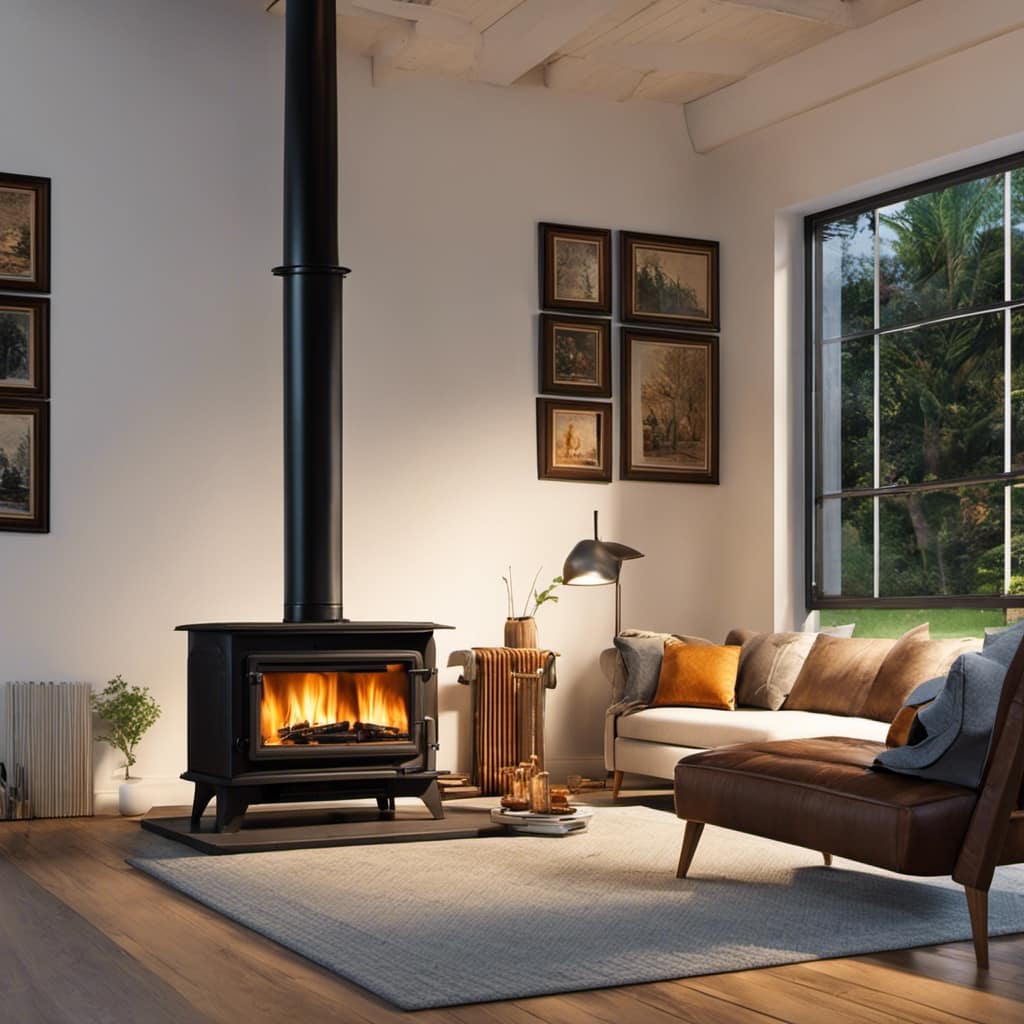
Proper airflow management is crucial for efficient heat regulation in a wood stove. If too much air is allowed in, the fire will burn too fiercely and generate excessive heat. On the other hand, if there is not enough airflow, the fire will smolder and produce less heat. By finding the right balance, I can ensure that my wood stove operates at its optimal efficiency.
Here is a simple table that illustrates the relationship between damper position, airflow, and heat output:
| Damper Position | Airflow | Heat Output |
|---|---|---|
| Fully Open | High | Maximum |
| Partially Open | Medium | Moderate |
| Fully Closed | Low | Minimum |
By referring to this table, I can easily determine how to adjust the damper to achieve my desired level of heat.
Now that we have covered adjusting airflow and controlling heat, let’s move on to the next step: maintaining and cleaning the wood stove.
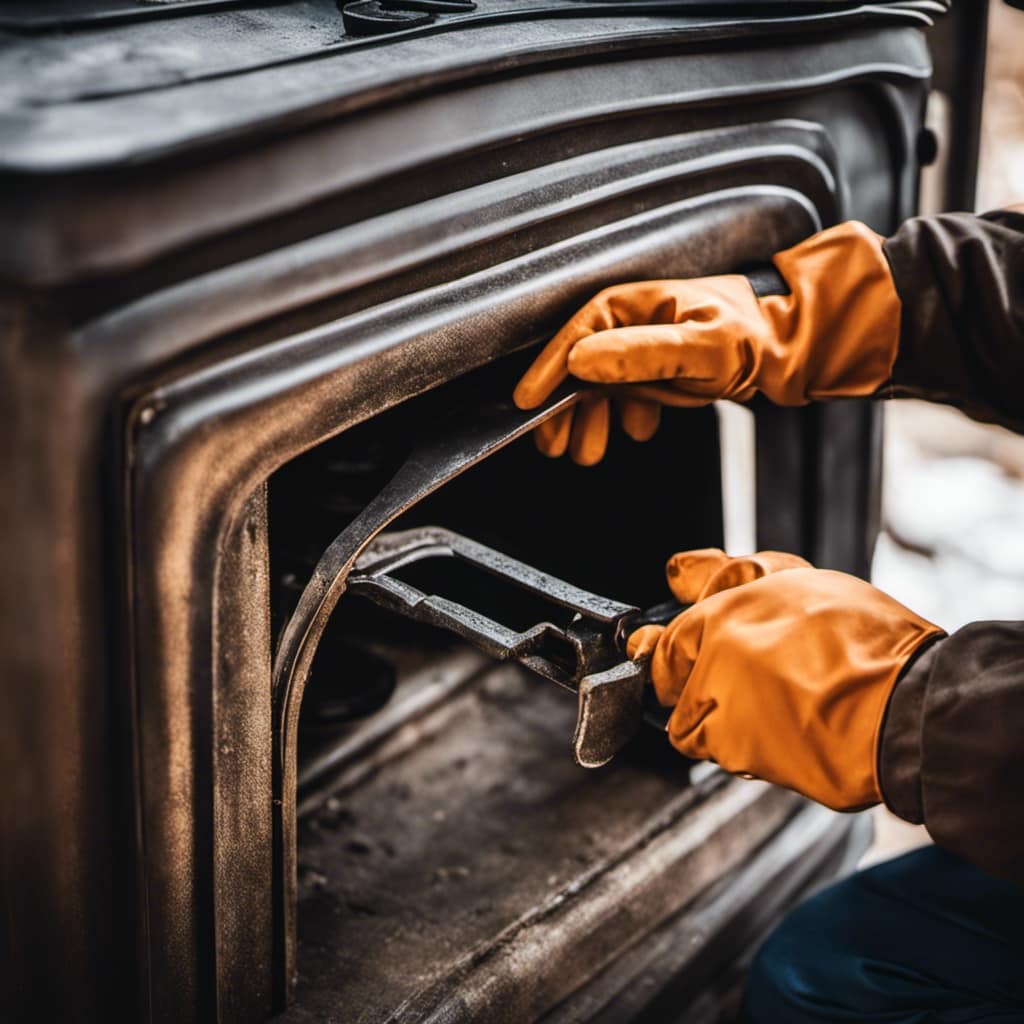
Maintaining and Cleaning the Wood Stove
Cleaning and maintaining my wood stove is essential for its proper functioning and longevity. Regular cleaning not only ensures efficient heat output but also prevents the build-up of creosote, a flammable substance that can cause chimney fires. Here are some cleaning techniques and tools I use to keep my wood stove in top condition:
Cleaning Tools:
Fireplace brush: A stiff-bristled brush helps remove ash and debris from the firebox and flue.
Ash shovel: A metal shovel with a long handle is ideal for scooping out ashes safely.
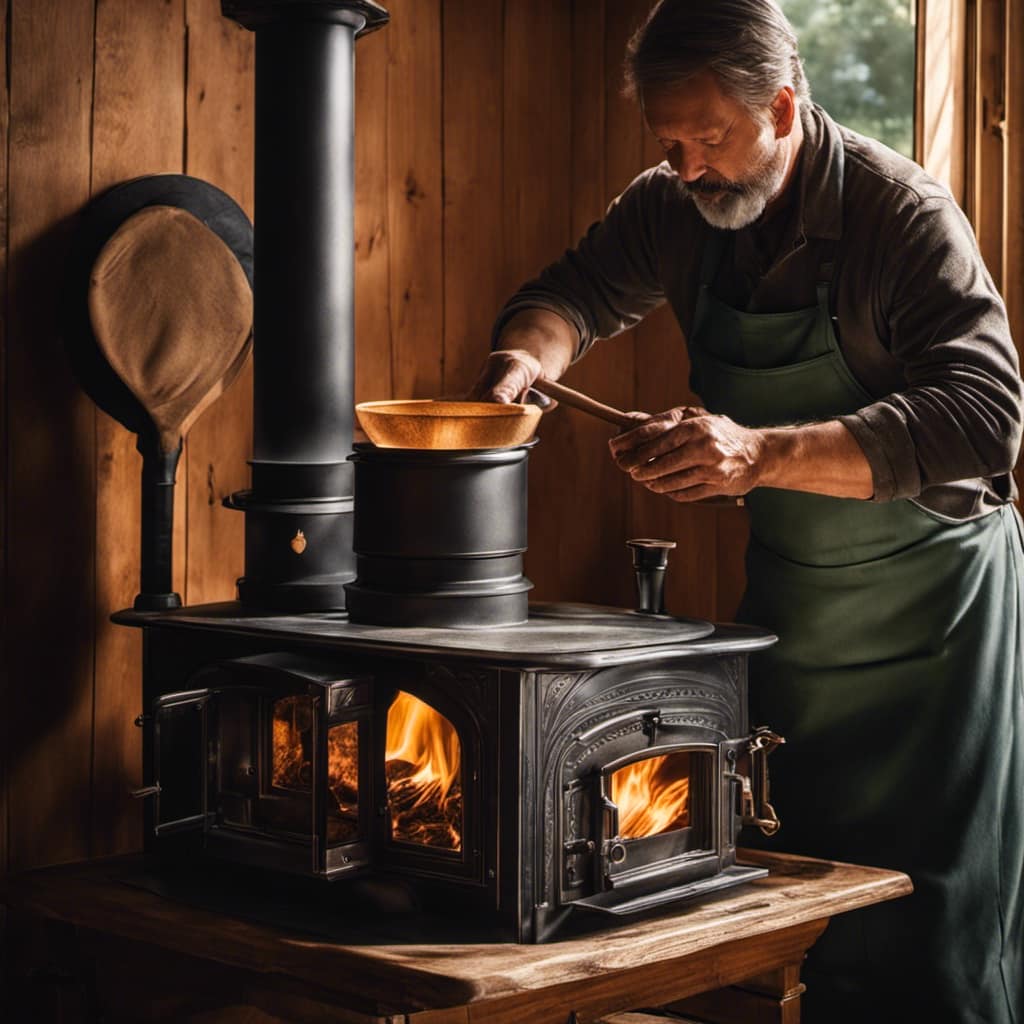
Chimney brush: A chimney brush with sturdy bristles is necessary for removing creosote deposits from the chimney walls.
Cleaning Techniques:
Ash removal: Before cleaning the stove, I ensure that all embers have cooled down. Using the ash shovel, I carefully scoop out the ashes and dispose of them in a metal container.
Firebox cleaning: Using the fireplace brush, I sweep away any remaining ash or debris from the firebox walls and floor.
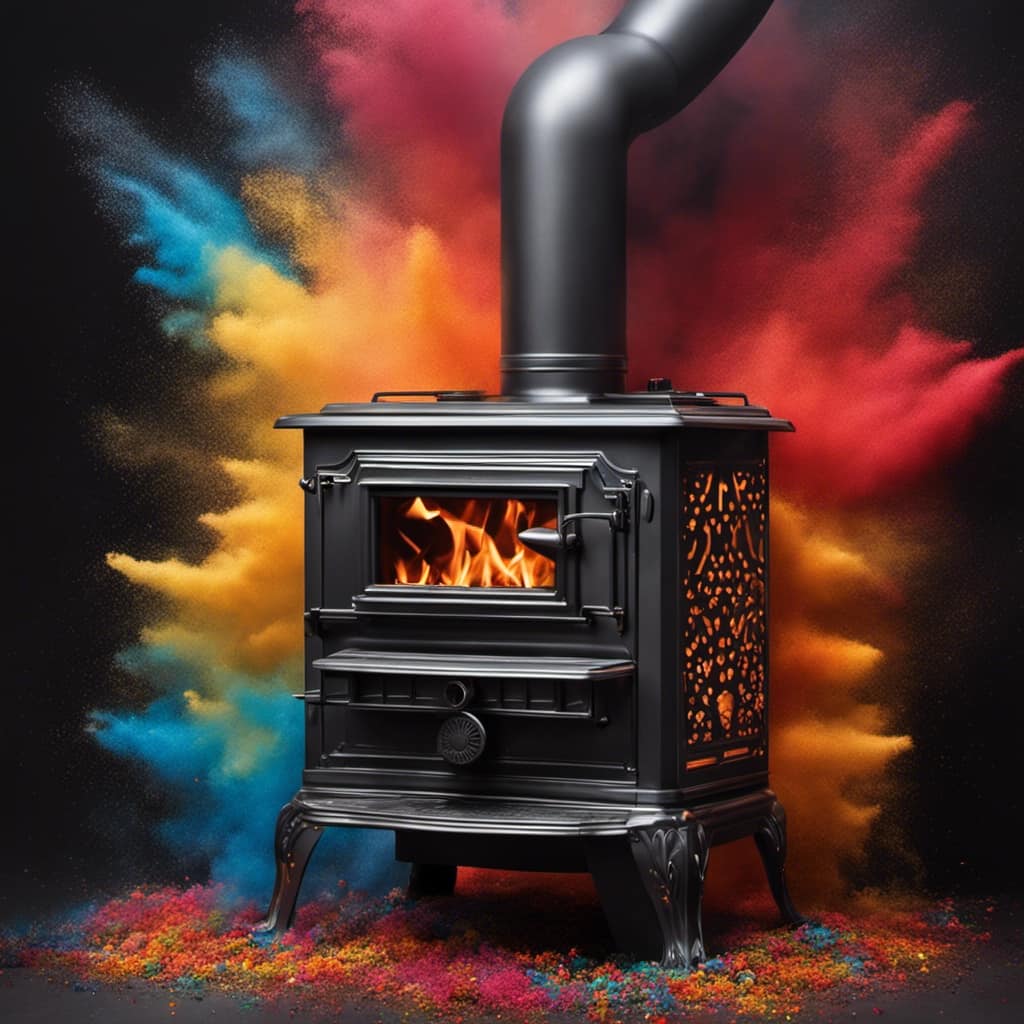
Chimney cleaning: Once a year, I insert the chimney brush into the flue and scrub the walls to remove creosote build-up.
Troubleshooting Common Issues
When it comes to troubleshooting common issues with a wood stove, I’ve learned a few tricks that can help.
Poor air circulation can often be resolved by checking the position of the air vents and adjusting them accordingly.
If you notice smoky or dirty glass, it may be a sign of incomplete combustion, so make sure to properly light the fire and ensure the wood is dry.
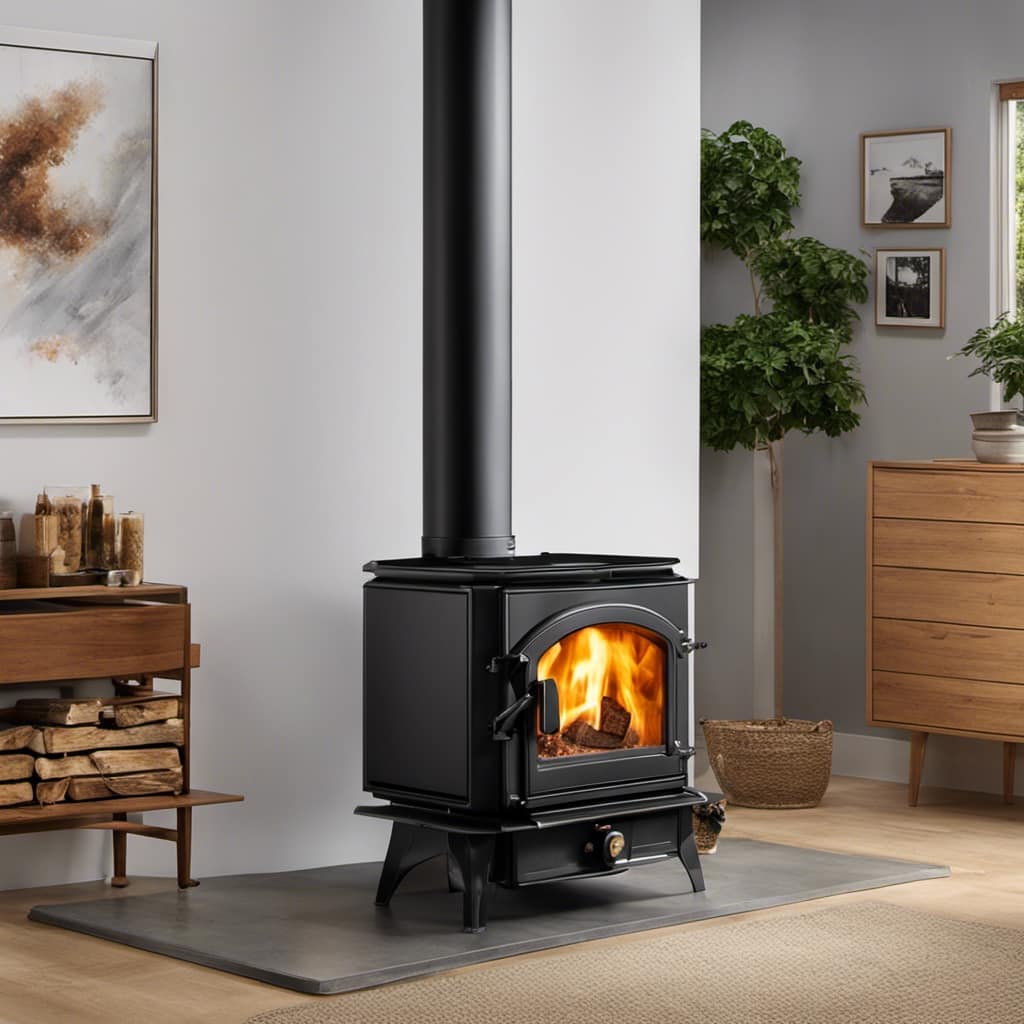
Lastly, if you’re having difficulty lighting the stove, double-check the quality of the firewood and consider using fire starters or kindling to help get the flames going.
Poor Air Circulation
I’ve noticed that the air circulation in my wood stove isn’t very good. This can lead to reduced efficiency and increased smoke inside the house.
To improve ventilation and reduce smoke, there are a few things you can do:
Clean the air vents: Over time, soot and debris can accumulate, blocking the air vents. Regularly clean them to ensure proper airflow.
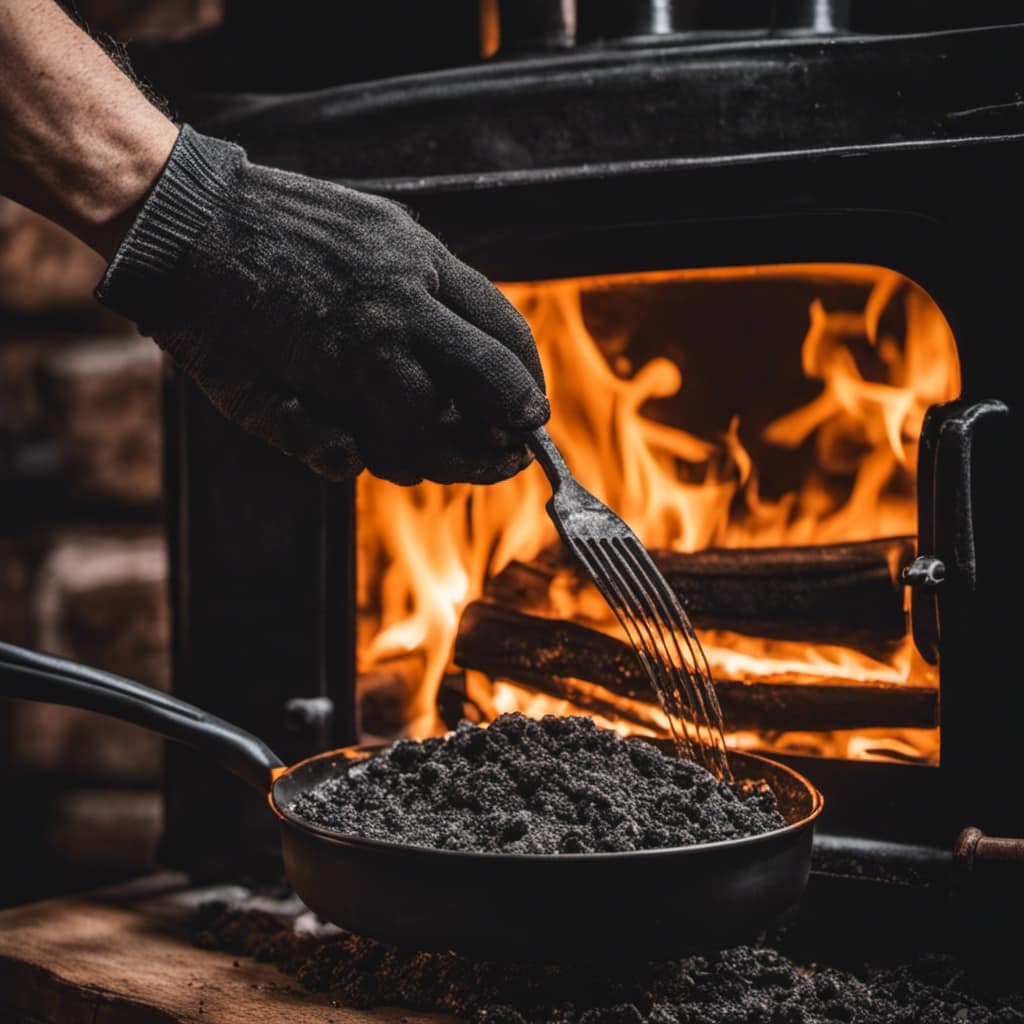
Check the chimney: A blocked or dirty chimney can hinder air circulation. Have it inspected and cleaned annually to prevent smoke buildup.
Use dry firewood: Wet or unseasoned wood produces more smoke and reduces airflow. Use dry, well-seasoned firewood to promote better combustion and minimize smoke.
Improving the air circulation in your wood stove not only enhances its performance but also creates a healthier and more enjoyable environment for you and your family.
Smoky or Dirty Glass
When it comes to wood stoves, one common issue is the smoky or dirty glass. This can be frustrating, as it obstructs the view of the beautiful flames inside. To tackle this problem, it’s important to know some effective cleaning techniques and preventive measures.
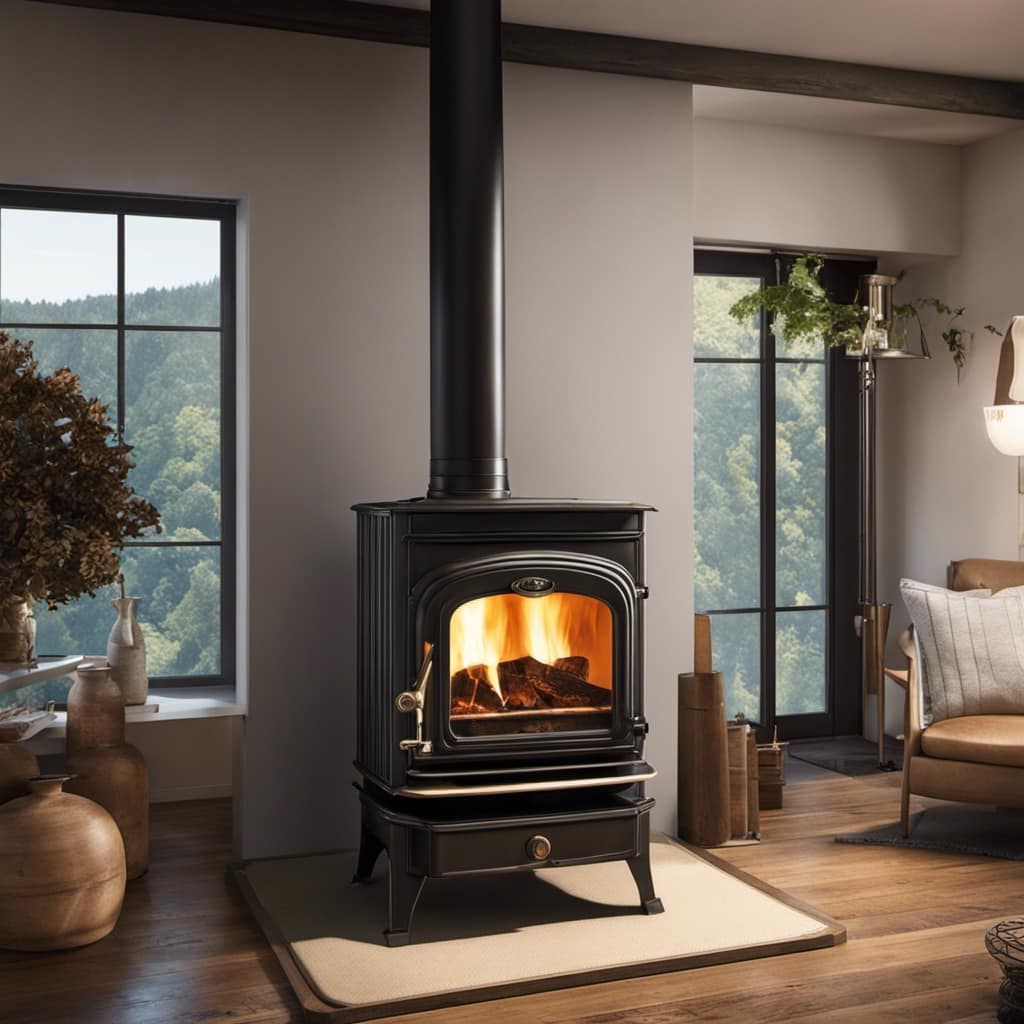
Cleaning Techniques:
- Use a mixture of vinegar and water to clean the glass.
- Scrub gently with a non-abrasive sponge or cloth.
- For stubborn stains, use a specialized glass cleaner for wood stoves.
Preventing Build Up:
- Burn only dry, seasoned wood to reduce smoke and soot.
- Avoid closing the air vents completely as it can lead to incomplete combustion and more smoke.
- Regularly inspect and clean the chimney to prevent the build-up of creosote, which can contribute to smoky glass.
By following these cleaning techniques and preventive measures, you can ensure that your wood stove’s glass remains clean and clear, allowing you to enjoy the cozy ambiance it provides.
Now, let’s move on to the next issue: the difficulty in lighting the wood stove.
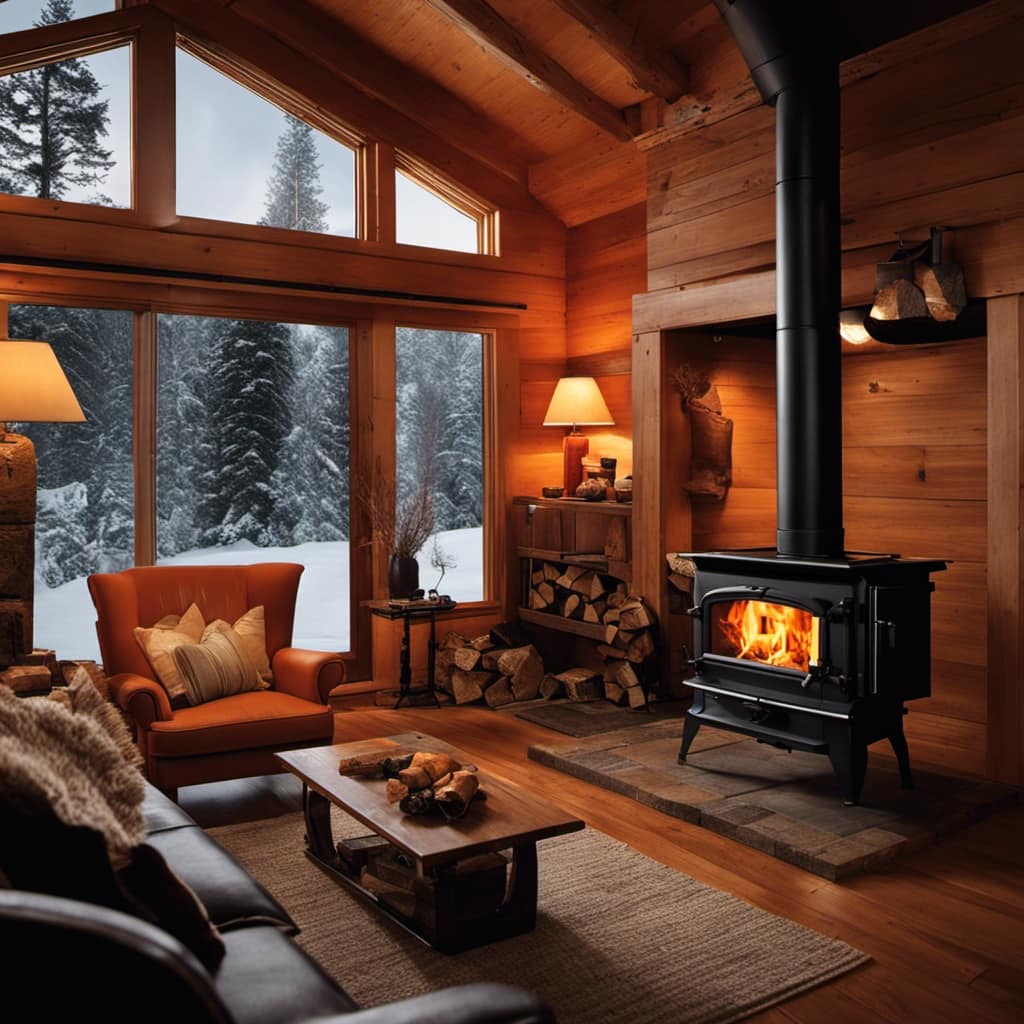
Difficulty in Lighting
I find it frustrating when the wood stove is difficult to light. It’s important to have effective lighting techniques and reliable firestarter options to ensure a smooth and efficient start to your fire. Here are some tips to help you overcome this challenge:
Properly prepare the firebox: Clear out any ash or debris from the previous fire. Make sure the air vents are open and unobstructed for proper airflow.
Use dry and seasoned firewood: Wet or green wood can be difficult to ignite. Opt for dry and well-seasoned firewood, as it burns more easily and produces less smoke.
Consider using firestarters: Firestarters such as newspaper, firestarter logs, or paraffin wax cubes can provide an easy and reliable ignition source. These can be placed underneath the firewood to help get the flames going.
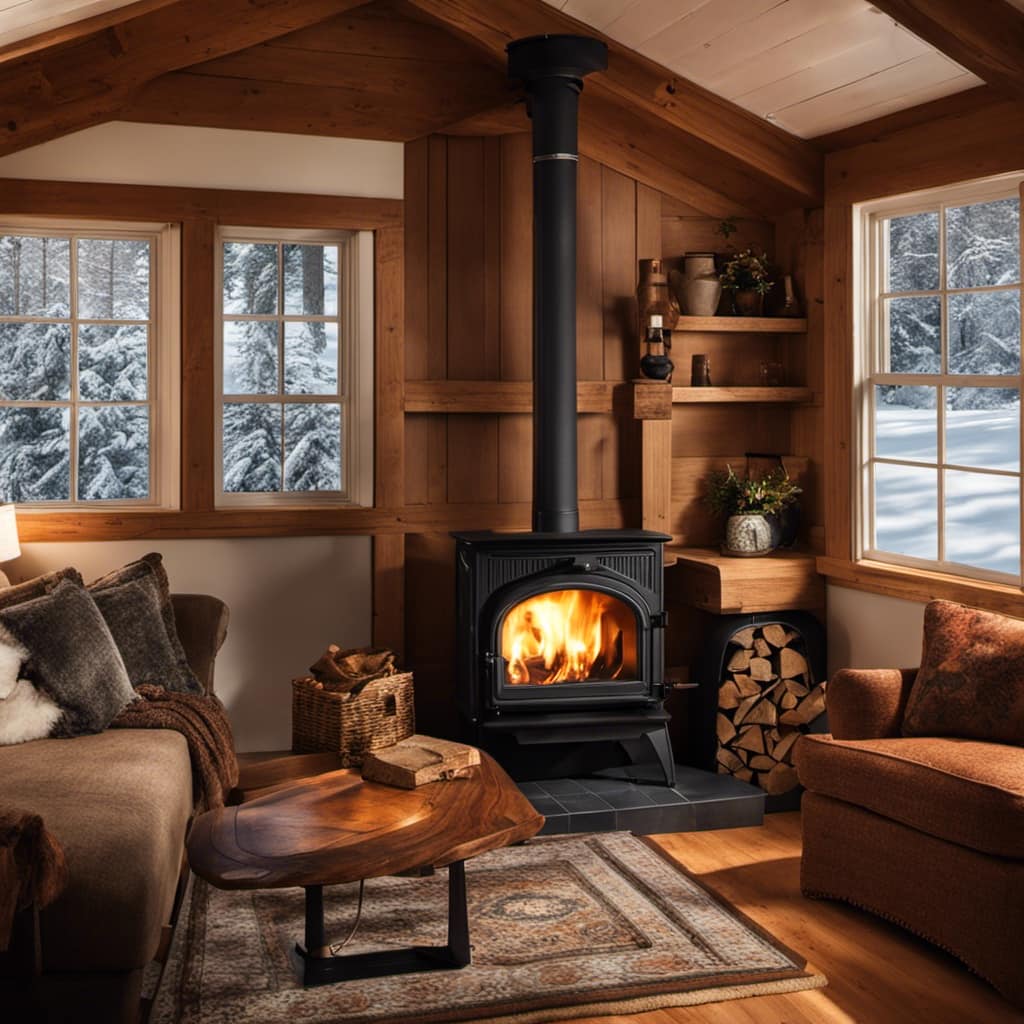
Can I Efficiently Heat My Entire House Using a Wood Stove?
Yes, you can efficiently heat your entire house using a wood stove. By strategically placing the wood stove in a central location, using ceiling fans to circulate the heat, and ensuring that your home is well-insulated, you can effectively distribute the warmth throughout your living space using wood stove to heat.
Frequently Asked Questions
Can I Use Any Type of Firewood in a Wood Stove?
Yes, you can use different types of firewood in a wood stove. However, it’s important to follow best practices for using firewood in a wood stove.
It’s recommended to use seasoned hardwoods like oak, maple, or birch as they burn longer and produce more heat. Softwoods like pine can be used, but they burn faster and may leave more residue.
Always ensure the firewood is properly dried and split to fit your stove’s size and follow proper ventilation and safety protocols when using your wood stove.
How Often Should I Clean the Chimney of My Wood Stove?
When it comes to chimney maintenance for a wood stove, it’s crucial to clean it regularly to ensure optimal performance and safety.
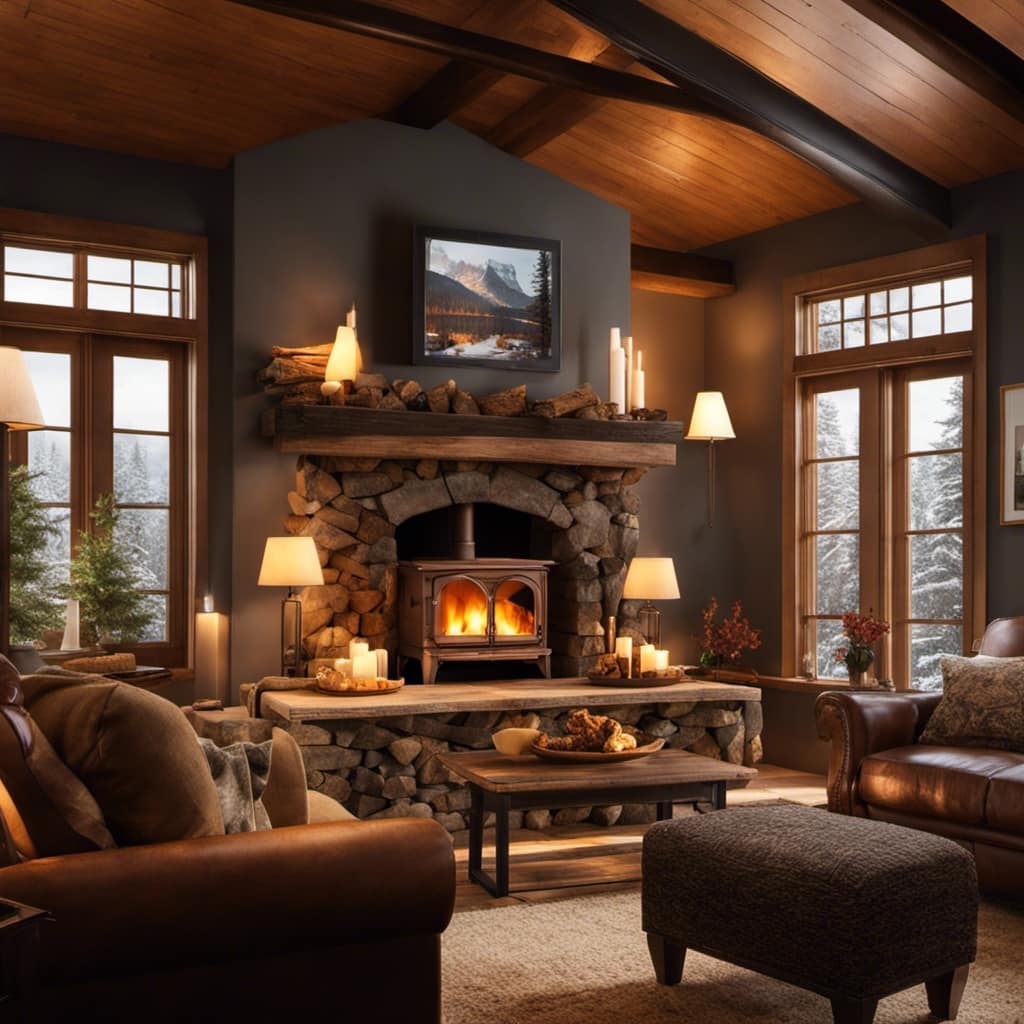
I learned this the hard way. One winter, I neglected cleaning my chimney, and it resulted in a buildup of creosote, which caused a chimney fire.
Now, I make it a point to clean my chimney at least once a year, preferably before the start of the heating season. Regular cleaning prevents creosote buildup and reduces the risk of chimney fires.
Can I Leave My Wood Stove Unattended While It Is Burning?
Yes, it’s important to never leave a burning wood stove unattended.
Proper wood stove maintenance is crucial for safety. A wood stove can pose a fire hazard if not properly monitored.
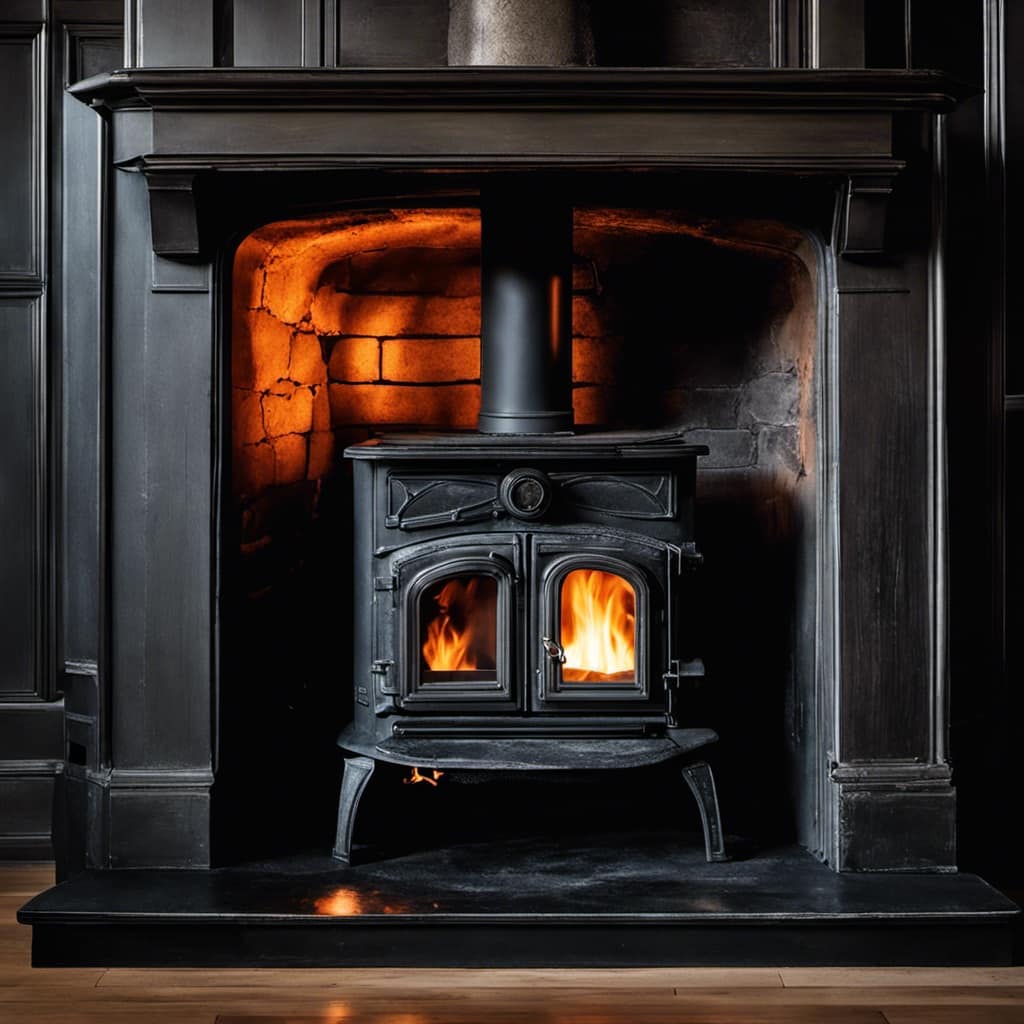
Always make sure to extinguish the fire completely before leaving the room or going to bed.
Regularly clean the chimney to prevent a buildup of creosote, which can ignite and cause a chimney fire.
Following these precautions ensures the safe use of a wood stove.
Is It Safe to Use a Wood Stove in a Mobile Home or Rv?
Using a wood stove in a mobile home or RV can be safe if proper precautions are taken. It’s important to ensure proper ventilation to allow for safe air circulation. This can be achieved by installing a vent or chimney system specifically designed for mobile homes or RVs.

Additionally, fire safety measures should be followed, such as keeping flammable materials away from the stove and regularly inspecting the stove for any signs of damage.
How Do I Prevent Creosote Buildup in My Wood Stove?
To prevent creosote buildup in a wood stove, it’s important to follow a couple of key steps.
First, use properly seasoned firewood, as wet or unseasoned wood can produce more creosote.
Second, make sure to regularly clean your chimney to remove any creosote that has built up. This can help reduce the risk of chimney fires and keep your wood stove functioning efficiently.
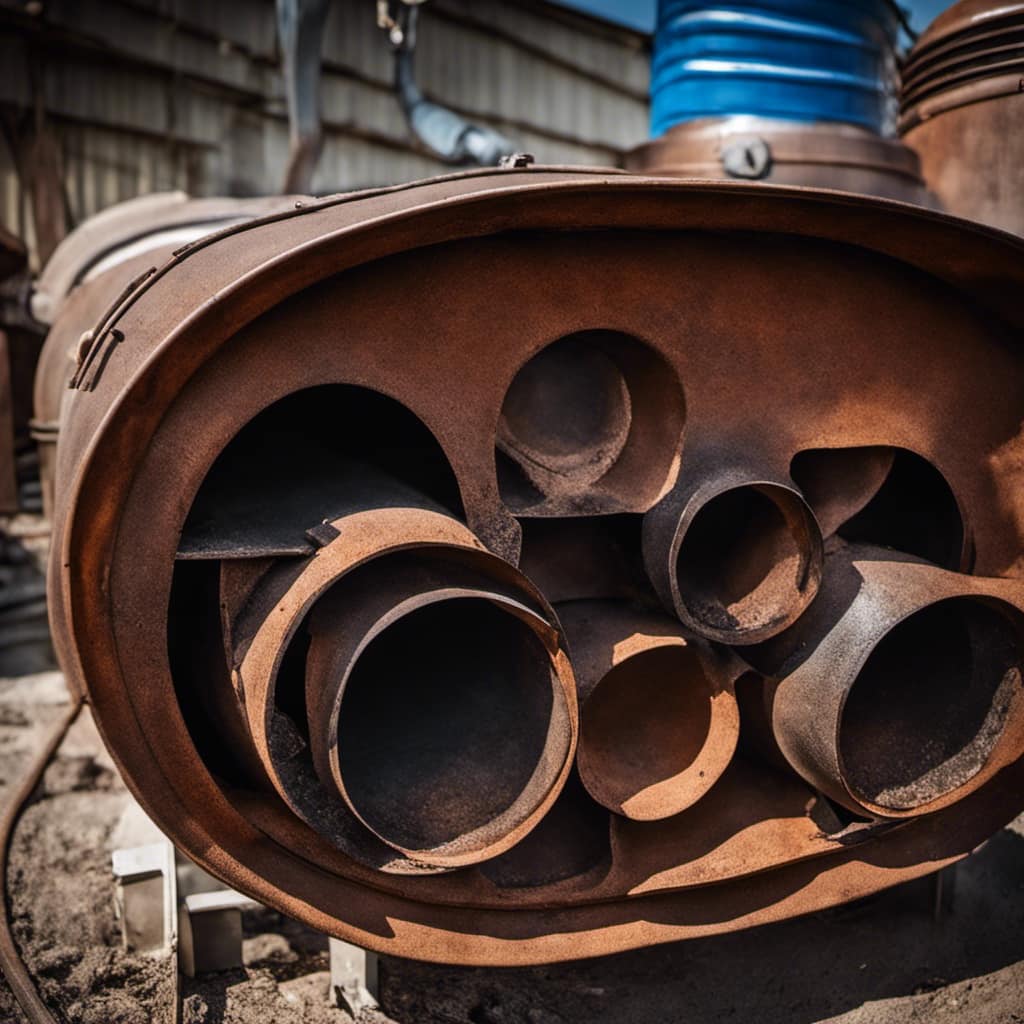
Taking these precautions will help maintain a safe and effective wood stove.
Conclusion
In conclusion, using a wood stove can provide warmth and comfort during the colder months. By following safety precautions, gathering and preparing firewood, properly lighting the fire, adjusting airflow, and maintaining and cleaning the wood stove, you can ensure its efficient and safe operation.
As the saying goes, ‘A well-tended fire warms the body and soothes the soul.’ So embrace the coziness and timeless charm of a wood stove, while keeping safety and maintenance in mind.
Stay warm and enjoy the comforting glow of a crackling fire.
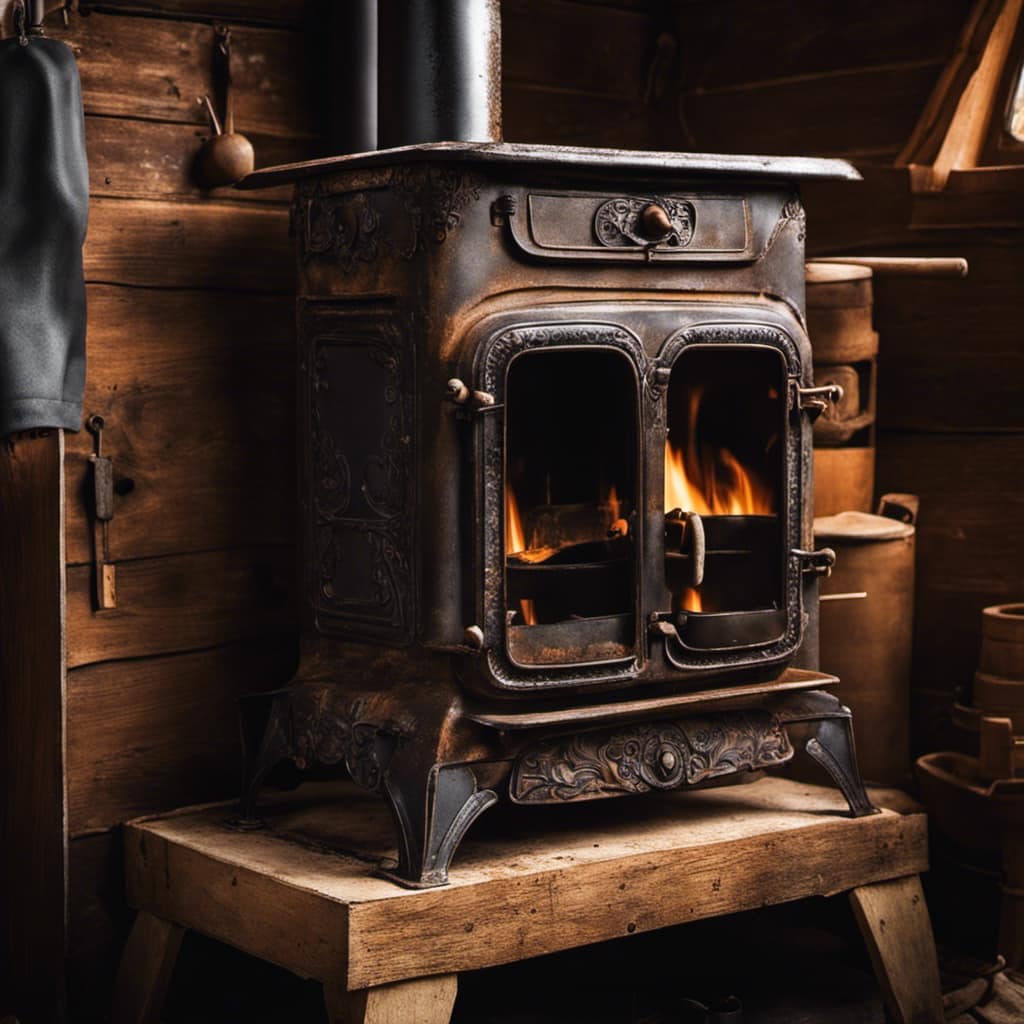
Growing up surrounded by the vast beauty of nature, Sierra was always drawn to the call of the wild. While others sought the comfort of the familiar, she ventured out, embracing the unpredictable and finding stories in the heartbeat of nature.
At the epicenter of every remarkable venture lies a dynamic team—a fusion of diverse talents, visions, and passions. The essence of Best Small Wood Stoves is crafted and refined by such a trio: Sierra, Logan, and Terra. Their collective expertise has transformed the platform into a leading authority on small wood stoves, radiating warmth and knowledge in equal measure.











